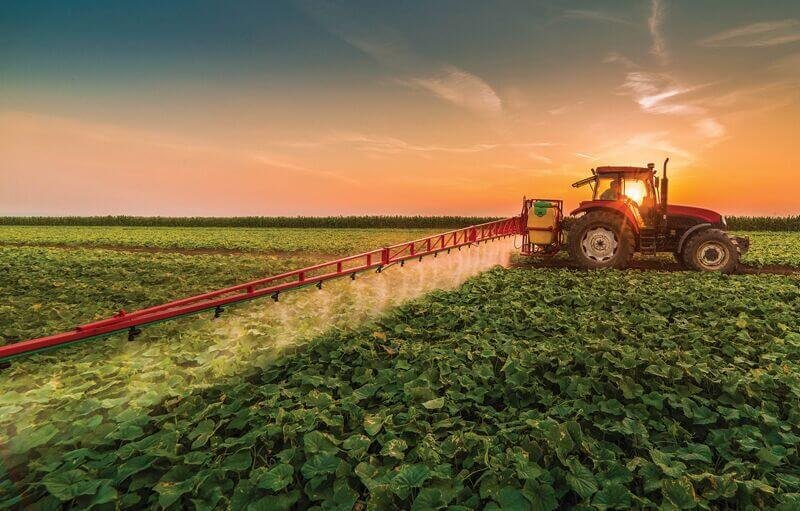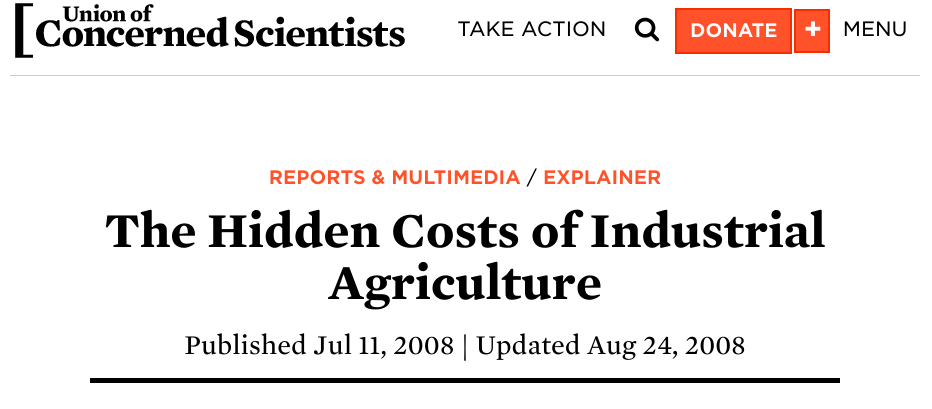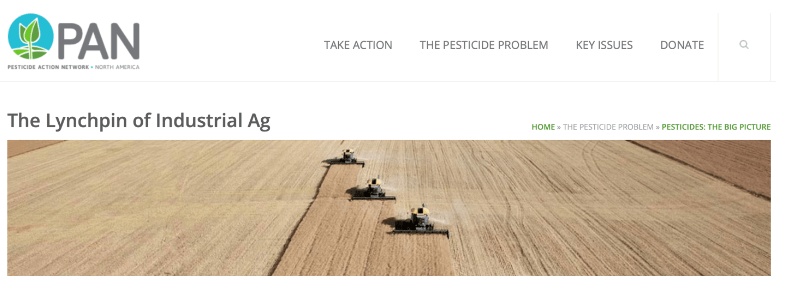Well over 90% of food, produce and grains in the United States is grown on conventional farms. Critics stigmatize this intensive system as ‘industrial’ and claim that its focus on a few high yielding crops leaves it vulnerable to a “diversity crisis in the face of looming climate change challenges.
For decades, this has been a familiar refrain in the environmental advocacy community, with the complaints with the introduction of genetically modified crops in the 1990s. In the late 2000s, the Union of Concerned Scientists posted a classic screed targeting “industrial agriculture” arguing in favor of what scientists now consider the least sustainable solution to the environmental externalities of intensive agriculture: small-scale farms.
Over time, old-line environmentalists, many of whom reject intensive farming outright, have focused on promoting what they call ‘low input agroecology-based farms’— which to supporters means a reduction in the use of synthetic fertilizers and chemicals (which has become the goal of all farmers in recent decades and supply costs have surged and an awareness of the ecological repercussions of certain chemicals has grown.)
Even as evidence of the sustainability benefits of land-saving intensive farming in an age of climate dislocation has grown, a slew of high profile, old-line environmentalists have double-downed on lower-yield, carbon-generating organic farming, including, among many, the NRDC (Industrial Agriculture 101); As You Sow (Sustainable Agriculture: A Healthy Solution to the Problems of Industrial Agriculture); and Pesticide Action Network (The Lynchpin of Industrial Ag).
Many activists advocate for a return to “old varieties” and small-scale farming as a way to increase farm level diversity. There is enough evidence now to acknowledge that such a strategy won’t work, as almost all the arable land available in the world has been called for. These activists also fail to recognize the fact that a significant part proportion of US farmland is now managed with minimum tillage methods, precision fertilization, crop rotation and cover crops. While rejecting modern technology is not a rational strategy for adaptation, farmers will definitely be facing more climate dislocations going forward.
What can and should be done to ensure genetic diversity?
Genetic diversity will play a critical role in any solution as will the technologies needed to make it operable in productive crop varieties. Genes that enable important traits need to be accessed from different commercial and non-commercial varieties of each crop, from wild and cultivated relatives, from non-related plants, and even from organisms outside of the plant kingdom.
So, what sorts of traits are needed for crops to be “climate ready?” Several have to do with the ability to withstand extreme weather events including drought and heat, or conversely the ability to survive spring flooding events. Various hardy plants hold the secrets for improving crops in that regard. Genes for salt tolerance will also be needed, particularly for crops irrigated from sources that are becoming more saline because of drought.
As winters get warmer in some geographies, perennial crops will require genetic changes to reduce the amount of winter chilling they require in order to flower. Those warmer winters are also increasing the overwintering range of important insect pests, and during the growing season warmer temperatures are allowing the pests to go through more reproductive cycles per year. These changes are making it more important to find sources of insect resistance for crops. A recent scientific study has concluded that climate change will create a “greater burden of crop protection due to increased disease and unfamiliar pathogens.” Again, genetic diversity is needed to address this challenge.
Fortunately, the need to preserve crop genetic diversity has been on the radar of the global ag science community for decades. Organizations around the world have been collecting and preserving seeds or other forms of crop species and their wild relatives. Collecting and organizing genetic diversity as a conservation strategy emerged in the 1960s and now plays an important role in ensuring the world’s collective food security. According to the UN’s Food and Agricultural Organization (FAO), there are more than 1,750 seed banks across the world — both international and local — that preserve over 7 million samples of seeds, cuttings, or genetic material.
What additional pro-actions are necessary?
While the existing collections are an important foundation, there are four additional pro-actions required in order to fully leverage that genetic diversity to meet climate challenges and other societal needs:
- Genebanks: Protection and expansion of diversity
- Genetic databases: Characterizing what is available in those banks in terms of traits and genetics, and making that information readily accessible:
- Crop improvement technologies: Improving locally and commercially desirable crop cultivars using the genes or information from diversity resources
- Societal issues: Address concerns that complicate or block efforts to fully employ the potential of genetic diversity (e.g., regulatory processes, ownership rights, and consumer/marketer acceptance)
Genebank protection and expansion
Seed saving organizations provide a critical safety net but they could be compromised by anything from natural disasters to military conflict or even mismanagement. There were reports last month, for example, that Ukraine’s giant seed bank was at risk from Russian attacks.
In 2004, an organization called Croptrust was founded by the FAO and CGIAR (Consultative Group on International Agricultural Research) to build what has been described at the “ultimate insurance policy for the world’s food supply” — the Svalbard Global Seed Vault underground in a mountain halfway between Norway and the North Pole.

This facility has the capacity to store 500 each of 4.5 million different seeds and still has around 80% of that space available. The samples come from the regional gene banks, and those entities control the use of their samples. This endeavor is supported by donations from 9 charitable foundations, the UN, 22 individual countries including the US, 7 global crop protection/seed companies, and 10 other agencies and organizations.

Croptrust also has a Crop Wild Relatives project seeking to further expand germplasm collections to include previously unprotected plant species that are not domesticated. Clearly, there a broad consensus about the need to maintain access to genetic diversity for crops, and there is extensive engagement in the process of doing something about it.
Genetic databases
The value of diversity collections increases the more that is known about what exactly is there. As genetic sequencing technology has become cheaper and faster it has become feasible to generate detailed information about what genes exist in genebanks or other collections. This also needs to be linked to information about the plant traits associated with those genes.
This data needs to shared in a useful way. There is a not-for-profit organization hosted by the Global Institute for Food Security (GIFS) in Canada called DivSeek that focuses specifically on this informational issue. They promote the use of those modern methods to generate “genomics” and “phenomics” data and then seek agreement on standardized methods to report it so that it becomes searchable and interoperable for many different potential users. They now have 11 regional or thematic “hubs” which are networks of mostly public sector researchers, government agencies, and inter-governmental organizations.

Their stated role is to “facilitate and encourage the open dissemination of information about plant genetic resource and to promote benefit-sharing derived from their use, while respecting indigenous knowledge and the international treaties and conventions established to protect them.” DivSeek also tries to mitigate the imbalance in the funding across crops with many of the minor crops lacking adequate support.
Other database examples include one by CIMMYT set up specifically to address “next generation climate smart wheat improvement.”
Crop improvement technologies: Grafting
One of the oldest and still most commonly used methods of tapping genetic diversity has been the process of grafting one type of plant onto a root system of another. Perennial crops have been cultivated this way for centuries because the seedlings from a tree or vine do not have the desirable qualities of the parent and so cuttings are grafted onto rootstocks which might have been grown from seed.
Historically, the European grape industry was nearly wiped out in the 19th century after the introduction of a root damaging insect pest from the New World called Phylloxera. The solution was to graft the European grape species, Vitis vinifera, onto different species of grapes native to North America. This was the original “Franken-food” complete with a scar at the graft union.
In modern times rootstocks are intentionally selected or bred to provide resistance to soil-borne pests and often to impart horticultural characteristics such as dwarfing to make trees easier to harvest. Some vegetable crops such as tomatoes, cucumbers and peppers are now sometimes grafted because of the genetic diversity advantages – an example being heirloom tomato varieties on disease-resistant roots that are even available for gardeners. Any climate-related adaptations that can be achieved through grafting will be available in a timely fashion.
Crop improvement technologies: Conventional breeding
Traditional plant breeding is still being very actively pursued for the crops of modern farming. It is a relatively complex process because every “cross” involves a mix of thousands of genes. If an elite breeding line is crossed with a wild or distant relative in order to access desirable diversity, much more “back-crossing” is required to get back to a “farmer-ready” version of the crop. Fortunately, this process has been speeded up because the presence of desired genes can be tracked based on “molecular markers” even at the seed stage.
One way that the global agricultural community has addressed these breeding challenges is to cooperate in a “pre-breeding” effort. Many crosses are made between modern lines and ancestral types in order to create a sort of intermediate diversity collection which is then available for backcrossing by commercial or public sector breeders who then take the steps to generate commercially viable lines.
As an example, wheat is a three-species hybrid inadvertently selected by ancient farmers around 10,000 years ago. Wheat breeders from around the world have cooperated to effectively do a re-run of that mix using one wild ancestor grass species and one two-species cultivated ancestor. The resulting pre-breeding collection will now be used to move diverse traits into breeding programs focused on the specific qualities needed for wheat’s specialized, modern uses (e.g. raised breads, pasta, noodles, flatbreads, crackers…)
There is a similar project coordinated by the USDA titled “Genetic Enhancement of Maize for U.S. Food Security and Agricultural Profitability”. It involves public, private and international cooperators who will be generating pre-breeding lines from around 300 tropical landraces of corn. These lines will then be offered back to breeders at a 25% exotic and 75% domestic stage.
Crop improvement technologies: Role of transgenics
Since the 1980s, genetic engineering methods have enabled “transgenic” movement of specific genes from one organism to another—so-called GMOs. This tool can be used for many purposes, one of which is tapping into the categories of genetic diversity that would not be practical or even possible through traditional breeding. Potatoes are a prime example.
After Europeans brought potatoes back from the new world in the 16th century it became a major food crop for that continent. A fungus that causes a severe disease called Potato Late Blight did not make its way across the Atlantic until the mid-1840s, and because farmers had been selecting for desirable types in the absence of the disease for 300 years, their crops lacked any resistance. The ensuing epidemics were severe. In Ireland the crop loss and the failure of the British to provide relief resulted in “the Great Hunger” leading to mass starvation and emigration.
Until recently this disease has only been controlled by growing in drier environments and with the use of fungicides. Some of the potatoes’ ancestor species in the Andes Mountains are resistant to Late Blight, but since potatoes rarely reproduce by flowers, it would be nearly possible to move that resistance into modern potatoes through conventional breeding. This inability to integrate genetics with fungicides leads to a less robust pest management system and frequent selection for fungicide resistance in the pathogen.
This paradigm has begun to shift since a US-based non-profit called 2Blades Foundation along with The Sainsbury Laboratory in the UK cooperated with the North American potato company Simplot to develop transgenic potato lines with the wild-type resistance genes. 2Blades worked with the International Potato Center (CIP) which moved three resistance genes into the types of potatoes grown in Uganda and Kenya – thus both small-holder and developed world farmers can realize the benefits.
With a grant from the Gordon and Betty Moore Foundation, 2Blades and distinguished academic collaborators have expanded their search for disease resistance traits using a technology developed at the Sainsbury Lab. Plants have mechanisms somewhat analogous to our immune system that allow them to recognize when they are being invaded by a fungal or bacterial pathogen so that they can activate their defense mechanisms. 2Blades along with academic cooperators is identifying that category of genes in several crops and their wild relatives. Their findings are being made publicly available and can be used in many different crops.
Transgenic technology can also extend the range of biodiversity options beyond land-based plants. For instance, a company called Yield10 Bioscience moved genes from ocean dwelling algae into the grain crop camelina so that it can make the health-promoting omega-3 fats that had previously only been available via fish in the food chain that starts with the algae.
Yield10 has also developed a genetic diversity-based “trait factory” they call GRAIN for Gene Ranking Artificial Intelligence Network. Using a top-down approach they identify metabolic pathways of interest and then look for genes in nature that are related to that function that they can then isolate and use to transform their main platform crop – camelina. They now have around 200 leads to do things like increase yield or oil content, confer drought tolerance or help plants have more efficient photosynthesis by reducing photorespiration. Yield10 makes the genes/information they discover available for use in other crops. Some of these traits can be enabled using gene editing technologies while others require a transgenic approach.
One particularly negative effect of climate change is a projected increase in the incidence of aflatoxin contamination in the Midwestern Corn Belt. That highly toxic and carcinogenic natural chemical is produced by a fungal pathogen called Aspergillus and it is better able to infect when the crop is stressed.
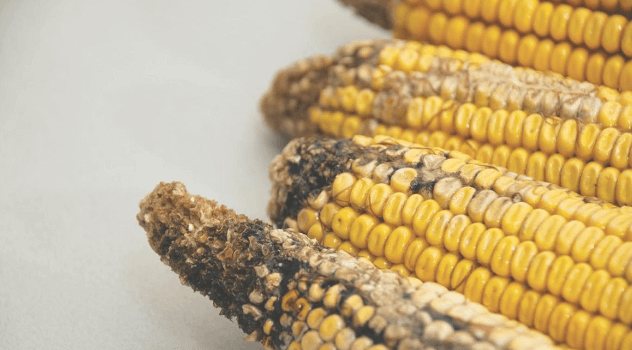
Taking genetic diversification beyond the plant word, researchers at the University of Arizona and the USDA engineered corn with a gene from the edible honey mushroom which codes for an enzyme that degrades the toxin.
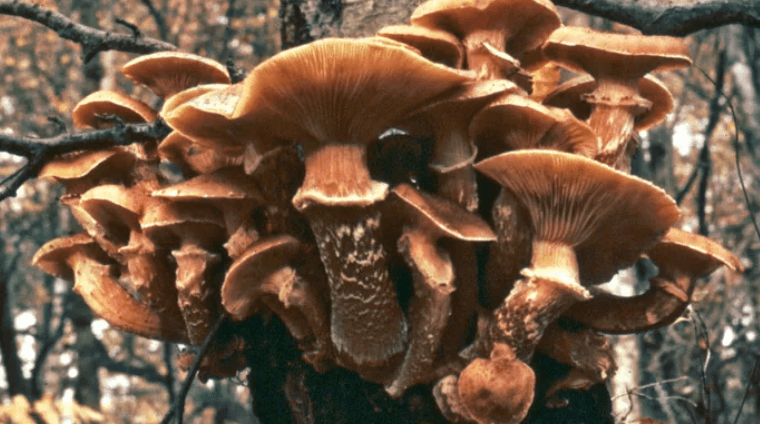
The work was originally funded by the Gates Foundation because the trait could offer a scale-neutral option for farmers in the developing world. It could also be quite useful in the US and other developed nations.
Crop improvement technology: Gene editing
There is a second generation of genetic engineering technology known broadly as gene editing. It focuses on changing existing DNA rather than introducing new genes, a technical distinction that has become important to regulators who have been more open to greenlighting gene-edited crops without a burdensome review process. There are several ways that these tools can be involved in the effort to tap into genetic diversity. There are many very different plants in nature; however, if there is useful trait of interest and the gene for it can be identified in something like a wild species, there are often related but not identical genes called “homologs”in a crop of commercial interest. By editing the gene sequence in the crop to match the one in the wild type, it is possible to realize the benefit of that trait.
Cibus, a company in San Diego, specializes in that sort of homolog modification using use a set of editing tools they call RTDS (Rapid Trait Development System) that allow them to make those changes without adding any “foreign” sequences. This sort of editing is possible even if there are multiple copies of the gene that needs to be edited and/or if the goal is to add multiple traits to a single new cultivar.
Cibus has worked extensively with disease recognition genes, and they have also identified gene editing targets involved in nitrogen use-efficiency, insect tolerance, herbicide tolerance, virus resistance and agronomic characteristics such as their “low pod shatter” trait for canola. That trait is now licensed and sold by most canola breeding companies on a non-exclusive basis for planting on 22 million acres across Canada. Their goal is to take the information they derive from biodiversity and apply it to farmer-ready cultivars or in plants at the most advanced stages of a breeding program.
What does the future portend?
The global agricultural system has gathered and protected extensive genetic diversity collections. The process is well underway to develop detailed and transferable information about what genes and traits are available. Multiple technologies are available to translate that diversity into meaningful crop improvements for farmers in both the developed and developing world. From the science side there is good reason to be optimistic about the system’s ability to adapt to climate change and other challenges. What is less certain is whether optimal progress will be realized or whether it will be inhibited or even blocked by the lack of international regulatory harmonization – particularly the policies in the EU and the countries where its post-colonial influence persists. For many fruit and vegetable crops in the US, brand-protectionism has thus far precluded the use of transgenic solutions. Hopefully, increased awareness of the climate change threat will encourage an openness to the need for technological solutions.
Steve Savage is a plant pathologist and senior contributor to the GLP. Follow Steve on Twitter @grapedoc

